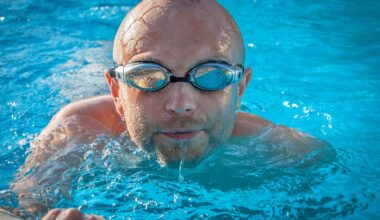Precision Imaging for Evaluating Foot Biomechanics in Disability Sports
Biomechanics serves as a critical aspect of sports science, particularly in evaluating disabled athletes’ foot movements. Understanding how athletes interact with their footwear during performance can greatly impact their overall efficacy and safety. Recently, imaging technologies have become indispensable in biomechanics studies, allowing for detailed insights into foot dynamics. These techniques enable researchers to visualize anatomical structures and functional responses under various conditions, leading to optimized interventions. Notably, the anticipated benefits may include improvements in injury prevention strategies and enhancement of athletic performance. Various imaging techniques, such as ultrasound, MRI, and 3D motion capture, play pivotal roles in this field. Each method provides unique benefits and insights, allowing professionals to choose the most suitable one based on specific research questions. Understanding biomechanical performance can guide rehabilitation, optimize training regimens, and improve footwear design. Thus, as the relationship between precision imaging and biomechanics continues, it becomes increasingly vital for incorporating findings into real-world applications. Ultimately, the integration of technology and biomechanics may carry groundbreaking implications for athletes and coaches aiming for peak performance in disability sports.
The evolution of imaging techniques in biomechanics has transformed the landscape of sports science. With advancements in technology, the capability to visualize the complexities of foot biomechanics has become unparalleled. Traditional methods often relied on subjective interpretations which can lead to uncertainties. Conversely, modern imaging technologies provide quantitative data essential for accurate assessments. This shift towards empirical data has heightened understanding of lower limb kinematics, critical in optimizing performance and preventing injuries. Techniques like 3D gait analysis and pressure mapping illustrate how biomechanical forces influence movement patterns in disabled athletes. By capturing and analyzing motion in real time, practitioners can make informed decisions regarding training and rehabilitation protocols. Furthermore, clinicians can utilize these methods to assess progression during recovery, tailoring interventions as needed. The amalgamation of biomechanical data with imaging allows for a comprehensive assessment approach. It serves not only the athlete but also their support network, ensuring informed choices during athletic pursuits. Therefore, ongoing research in this field remains paramount for establishing evidence-based practices, driving better outcomes in disabled sports as well as promoting inclusivity in athletic endeavors.
The Role of Imaging in Rehabilitation
Rehabilitation plays a fundamental role in supporting disabled athletes to return to their sport post-injury. Imaging technologies have augmented traditional rehabilitation methods, offering a scientific approach to treatment strategies. For instance, gait analysis using advanced imaging can pinpoint specific weaknesses or imbalances that may contribute to reinjury. By understanding the nuances of foot biomechanics, practitioners can craft personalized rehabilitation programs, ensuring optimal recovery trajectories for athletes. This approach fosters a proactive mindset in addressing foot-related dysfunctions that may disrupt performance. Moreover, these imaging modalities foster better communication between athletes and their rehabilitation teams. Visual representations of biomechanical assessments enhance athlete understanding, bridging gaps between perceived limitations and observable data. Such clarity can increase athlete engagement during recovery, motivating them to adhere to prescribed protocols. Consequently, athletes who undergo rehabilitation grounded in imaging findings are likely to experience improved outcomes. The synergy between sport science and rehabilitation continues to evolve, underscoring the importance of interdisciplinary collaboration. Thus, the expansion of imaging techniques in rehabilitation remains crucial for addressing the unique challenges faced by disabled athletes during their recovery journeys.
One of the most compelling aspects of imaging in biomechanics is its potential to influence footwear design. Proper footwear is essential for all athletes, particularly those with disabilities who may experience altered biomechanics. Imaging tools can provide quantitative data on how foot shape and movement patterns interact with various shoe designs. This feedback allows designers to create footwear that caters specifically to the unique needs of disabled athletes. Custom-fit shoes, informed by precise imaging techniques, can enhance comfort and stability during performance. Additionally, such innovations can mitigate the risk of injuries arising from ill-fitting footwear. By pairing biomechanics with advanced imaging data, brands can develop shoes that provide the necessary support while maximizing performance. Furthermore, collaborative efforts between biomechanists and shoe manufacturers can lead to industry-wide changes, promoting better standards for athletic wear. Athletes equipped with the right footwear may experience improved outcomes, demonstrating the impact technology has on sport. In conclusion, advances in imaging techniques hold promise for revolutionizing not just performance metrics, but also product design and athlete satisfaction across the board.
Future Directions in Biomechanics Imaging
The future of imaging in biomechanics is exceedingly bright, particularly regarding innovations that may enhance the accuracy and usefulness of data collected. Developments in portable imaging technologies and artificial intelligence may soon revolutionize biomechanical assessments. Such advancements enable real-time analysis in diverse environments, including training facilities and competition venues, where access to traditional lab settings is limited. As wearable technology continues to gain traction, it has the potential to complement imaging techniques further by providing continuous metrics on foot biomechanics throughout activities. Future research may focus on integrating these innovations to yield comprehensive profiles of an athlete’s performance. By harnessing machine learning algorithms, practitioners can analyze vast datasets, identifying patterns that may remain unnoticed through conventional assessments. This data-driven approach could foster further inclusivity in sports science, providing athletes personalized insights tailored to their unique biomechanics. Collaboration between researchers, engineers, and practitioners is essential in this endeavor. Ultimately, as the field of biomechanics continues to advance, its implications for improving athletic performance and ensuring safety will resonate profoundly within the sports community.
As technology progresses, ethical considerations surrounding imaging in biomechanics cannot be overlooked. Ensuring the privacy and consent of athletes during assessments is paramount, especially in studies involving disabled participants. Researchers and practitioners must establish appropriate protocols to protect sensitive data and maintain the trust of athletes. Addressing these concerns fosters a collaborative environment where athletes feel secure in sharing their experiences. Moreover, transparency around the potential risks and benefits of imaging studies is essential in educating participants. Professionals must convey the implications of the data collected and how it will be utilized in improving their training and rehabilitation. Engaging athletes in these discussions promotes a deeper understanding and empowers them to make informed decisions about participation. Furthermore, involving athletes in the research process can lead to more ethical frameworks aligned with their views and experiences. Incorporating feedback can enhance the relevance of the findings while ensuring ethical standards are upheld. In summary, navigating the ethical dimensions of imaging in biomechanics is a crucial aspect ensuring responsible research practices in disability sports.
Conclusion: The Impact of Imaging on Disability Sports
In conclusion, imaging techniques have drastically transformed the landscape of biomechanics, particularly in evaluating foot dynamics among disabled athletes. These methods offer vital insights into understanding individual biomechanical challenges and optimizing rehabilitation strategies. The intricate relationship between technology and biomechanics is evident; as tools become more refined, practitioners can glean better insights into performance. The synergy between research, athletic support, and technology fosters an environment conducive to maximizing potential in disability sports. Enhanced footwear design, personalized rehabilitation methods, and increased athlete engagement are just a few tangible benefits stemming from these innovations. The forward momentum suggests an exciting future, where additional advancements may arise, further supporting athletes’ journeys. The importance of inclusivity in the development of these imaging technologies cannot be overstated, emphasizing collaboration between various disciplines. Moving forward, ongoing research will remain critical for maintaining an athlete-centric focus while navigating ethical considerations. As biomechanics continues to evolve, its impact will resonate far beyond the competition, promoting a culture of safety, performance, and empowerment in disability sports.
Although the journey ahead is filled with challenges, the possibilities for improvements in sports science through imaging techniques are boundless. The commitment to optimizing foot biomechanics within disability sports signifies an ongoing dedication towards inclusivity and performance enhancement. Engaging athletes in every aspect of their health, performance, and rehabilitation not only fosters trust but ensures that their voices are valued. As biomechanics continues to marry with cutting-edge technology, the information gleaned may redefine athletic performance standards. The collective efforts of researchers, clinicians, and engineers will continue to drive the field forward, ensuring that improvements are rooted in science and responsive to the needs of the community. Enhanced training environments, innovative rehabilitation strategies, and better footwear designs are all key components that must evolve. Ultimately, the horizon of biomechanics is ever-expanding, encouraging ongoing research, dialogue, and collaboration to achieve breakthroughs that benefit athletes at all levels. As a community, the commitment to exploring every avenue of biomechanical innovation will lead to enriched experiences for disabled athletes. Thus, the intersection of imaging and biomechanics presents a journey filled with promise, ultimately transforming the landscape of sports science.


